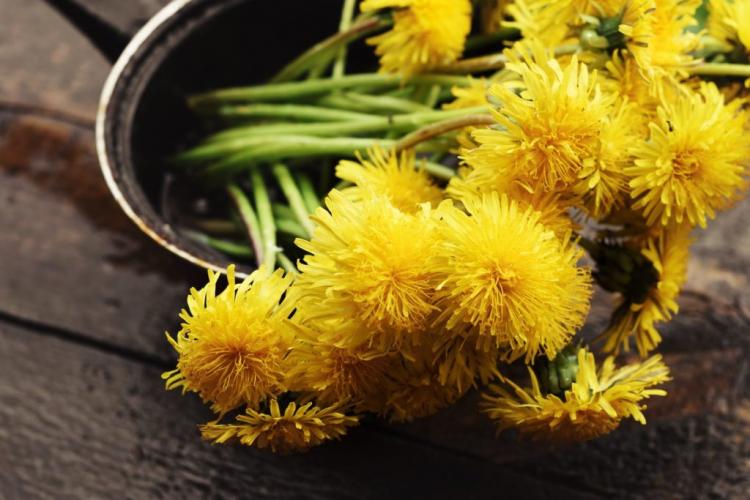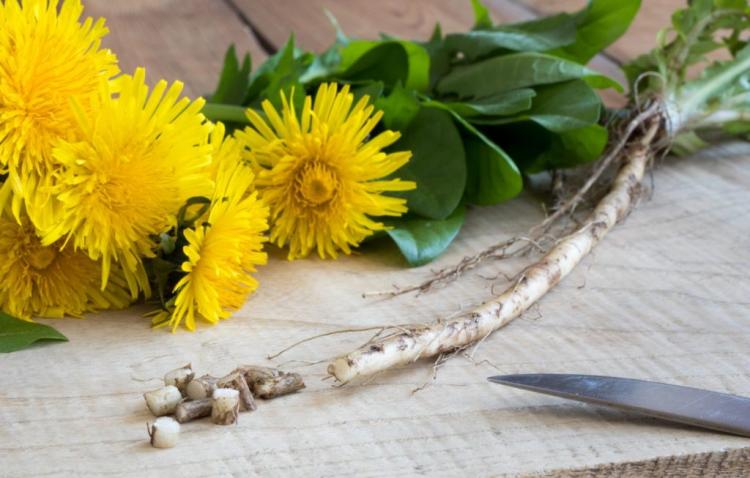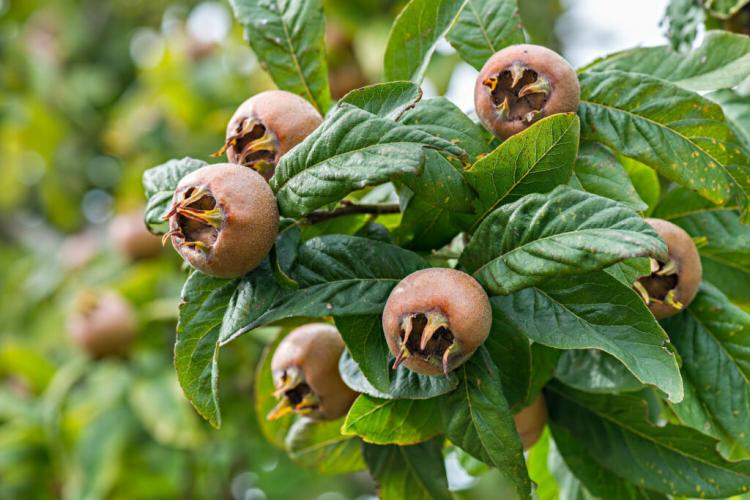Dandelions: All You Need to Know About The Pesky Weed
More than pesky weed, dandelions can also be used in the kitchen. We show how to successfully plant and harvest dandelions.
Who is not happy when the first yellow flowers appear in the fields in spring and open up a wonderful picture. We will show you what you can do with this herb and what else you should know about the meadow dandelion ( Taraxacum officinale ).
The plant genus dandelion ( Taraxacum ) is widespread all over the world and countless types of dandelion can be recognized by their daisy flowers in various shades of yellow. In addition to the meadow dandelion, there are, for example, the horned dandelion ( Taraxacum Ceratophyllum ), the Tyrolean dandelion ( Taraxacum tirolense ), the loess dandelion ( Taraxacum serotinum ), and many other species. The dandelion is often called the dandelion in our latitudes and has even become a popular tattoo and decoration motif.
Dandelion: origin and characteristics
Table of Contents
For the following remarks, we refer to the species group of the meadow dandelion or the common dandelion ( Taraxacum officinale ) and its properties. This dandelion also has the nickname Taraxacum – other names for the dandelion are milk flower, cow flower, or dog flower. The herb has been known for its effects since the 16th century. At that time it was called “blessed medicine”.

The dandelion belongs to the Asteraceae family and is found all over the world. It can be found on all continents that are in the temperate zone. Typical of the dandelion are its yellow flowers and the strongly toothed leaves, which are arranged in a rosette. The dandelion underground has a strong taproot, the stem is hollow and contains a lot of milky sap, which can leave unsightly stains. A dandelion can reach heights of 5 to 30 centimeters and one plant can produce and distribute up to 3000 seeds per year.
The dandelion is also very popular with insects, for example with bees ( Apiformes ). To produce one kilogram of honey, the bees have to visit around 125,000 dandelion blossoms and collect the nectar there – a top performance by the bees that we should not forget when enjoying our next honey bread. The herb is very nitrogen-loving and therefore spreads widely on meadows that are fertilized with liquid manure. The dandelion blooms from April to July and can also be used as a medicinal herb and as a seasoning herb in the kitchen.
As a medicinal herb, dandelion can be used against the following ailments:
- Loss of appetite
- Flatulence
- Inflammation
- Digestive problems
- constipation
- Bloating
In addition, the bitter substances contained stimulate the bile and liver, which is why dandelion can be used for detoxification. Quite a few take cures for detoxification and vitalization with dandelions in the spring. Digestion is also stimulated and the absorption of certain nutrients such as iron or vitamin B12 is stimulated and promoted.

Buy dandelions
Teas, spice blends, and other products containing dandelion are available in pharmacies and drug stores. Seeds for the garden can already be found in some nurseries and specialist shops, which makes it much easier for us to grow dandelions ourselves.
Plant dandelions
Since the dandelion is on the menu more and more often, many gardeners grow the dandelion specifically in their garden. After all, it’s very easy to grow – there are just a few things you need to consider. This includes that the dandelion prefers nutrient-rich and well-ventilated locations. The place should ideally be sunny so that the plant grows optimally, but the dandelion also feels comfortable in partially shaded areas of your garden.
It is sown from March to May, but you can also sow it in autumn from September to October. Since the dandelion is a light sprout, you should not sow the seeds too deep – a depth of one centimeter is sufficient. It is best to use high-quality seed compost, such as Garden organic herb and seed compost. This ensures the optimal starting conditions for your dandelion.
Propagate dandelions
Almost every child knows how the dandelions multiply and spread themselves because the dandelions can ideally spread themselves – all they need is a little wind. The seeds are carried away by the wind and due to the pointed shape of the seeds, they drill perfectly into the ground when they hit the ground.

You can easily remove the seeds from the seed stand yourself before the dandelion sows itself by the wind, and use it for targeted cultivation. Store the seeds in a dry and dark place or sow the dandelions immediately in your garden in the desired location. You can prefer the dandelion in spring, but in principle, the dandelion is ideal for sowing directly on the ground. It is important to keep the seeds moist after sowing and not to sow them too deep. The germination temperature is 15 to 20 ° C and germination takes two to four weeks.
Caring for dandelions
The dandelion does not need any special care. Since it is just a weed for some gardeners, it can be assumed that it does not need a lot of attention to thrive. The dandelion prefers nitrogen-rich locations, but otherwise, no additional fertilization is necessary. However, you can use the dandelion itself as a fertilizer by preparing manure from the dandelion plants. Below you will find a recipe for the correct preparation of such dandelion manure.
Harvest dandelions
Whether you want to use wild or home-grown dandelions, the following should be considered when harvesting dandelions. You can use and collect the flowers, leaves, and roots of the dandelion. The leaves of the dandelion should be harvested before they bloom when they are still very young – this is the case in April and May. As soon as the dandelion is in bloom, the leaves take on a bitter taste and are no longer tasty in salads. The roots can also be harvested and pricked in autumn.

If you are not growing dandelions but simply collecting them in meadows, you should definitely pay attention to the following points:
- Do not collect on freshly fertilized meadows as there are still residues of liquid manure or liquid manure on the dandelions
- Do not collect next to busy roads as these dandelions are often polluted by the exhaust gases
Tip: When harvesting, you should wear old clothes that can get dirty, because the milky sap of the dandelion can leave ugly brown or yellow stains that cannot be removed – such discolorations can also appear on the fingers.
Dandelion: Ingredients and Uses
The bitter-tasting dandelion contains numerous effective substances. In the following, we will only present a small selection of its active ingredients:
- Bitter substances
- Flavonoids
- Carotenoids
- Vitamins
- Minerals (up to 5% potassium)
- Inulin
These ingredients are responsible for the different effects of the dandelion because the dandelion is said to have a metabolic and diuretic effect. Dandelion is used for loss of appetite, bile flow disorders, indigestion, flatulence, bloating, rheumatism, skin conditions, kidney gravel, anemia and to flush the urinary tract.

Since the dandelion has a diuretic effect, you should not take teas or other dishes with dandelions in the evening, otherwise, you will not have a quiet night ahead of you. You should consume a maximum of 10 to 15 grams of leaves with roots per day, which is about three cups of tea.
Recipes for using dandelion:
- Dandelion tea: Bring 1 to 2 teaspoons (1.5-3 g) of dandelion leaves and roots to a boil with a cup of water and drain the tea after 10 minutes. This tea has a diuretic and digestive effect and should be drunk before meals.
- Dandelion syrup: Boil two to three handfuls of dandelion flowers in 0.5 liters of water and simmer over low heat. After 15 minutes, strain the mixture and add 400 g of sugar. Boil the mixture again and add a teaspoon of citric acid. The syrup can then be filled into bottles and has a blood-purifying effect.
- Dandelion tincture: You will need 3 to 4 dandelion roots, which you should brush and wash thoroughly, then cut into small pieces. Put the dandelion root pieces in a wide glass vessel and pour 0.5 liters of alcohol over them – 40 percent grain, for example, is suitable for this. Cap the jar, put it in a sunny place, and wait 3 weeks. Then strain the tincture. You can drink this tincture after meals to aid digestion.
- Dandelion wine: Dandelion tea can be drunk to stimulate the appetite and regulate digestion. For this, you need a handful of dandelion flowers and pour 0.5 liters of white wine over them. Put this mixture in a cool place for a day, then strain the wine.

You can see that you can not only use the dandelion as a salad, which is also often called “canned salad”, but you can also extract many stimulating and beneficial remedies from the dandelion. But we can not only eat the dandelion, we can also use it to make plant strengtheners and plant care products.
Instructions for plant manure from dandelions:
- Dandelion manure: You need 1.5 to 2 kg of dandelion plants, which are set in 10 liters of water and fermented for 2 weeks. You can use this liquid manure undiluted or in a dilution of 1: 5. The dandelion manure can be used as a fertilizer for tomatoes ( Solanum Lycopersicum ), cauliflower ( Brassica oleracea var. Botrytis ), or head cabbage ( Brassica oleracea convar. Capitata ). In addition, dandelion manure can support composting and also improve the quality of the fruit and regulate growth in fruit trees and berry bushes.
- Dandelion tea: For the dandelion tea you need 15 to 20 g of dried dandelion herb, which is scalded with 1 liter of boiling water. Let the tea steep and use it undiluted. Dandelion tea is used like dandelion manure, especially for improving the fruits of berries, fruit vegetables, and fruits.
Remove dandelions
However, if you have decided to take on the dandelions in your garden, we would like to introduce you to various methods of removing dandelions. In our special article, we have put together the best methods for removing dandelions and reveal the most effective tips and tricks. These include methods of removing dandelions as well as preventive measures to prevent them from increasing in the first place.
You might so like:






